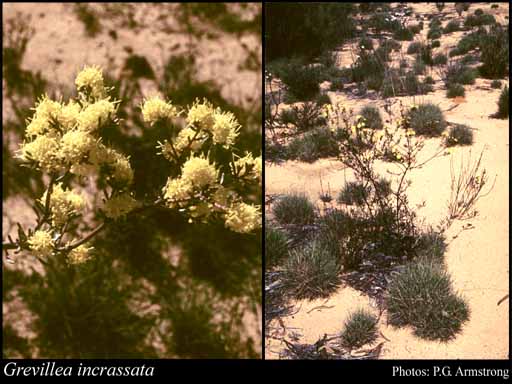- Reference
- Bot.Jahrb.Syst. 35:156 (1904)
- Conservation Code
- Not threatened
- Naturalised Status
- Native to Western Australia
- Name Status
- Current
Shrub, 0.3-2.3 m high. Fl. yellow/yellow-green, Mar or Aug to Nov. Yellow or brown sand, often with lateritic gravel, sandy clay. Sandplains with some laterite breakaways.







Scientific Description
Shrubs, 0.5-2 m high; branchlets hairy, not glaucous. Leaves alternate, 5-25 mm long, 0.5-1.5 mm wide, hairy, the hairs straight; lamina terete, entire. Inflorescences terminal, yellow; pedicels 1.5-3 mm long. Perianth 3-4 mm long; tepals all free after flower opens, glabrous; ovary glabrous, stipitate, the stipe 0.3-0.5 mm long; pistil 5-7 mm long, yellow, pollen presenter erect, style glabrous. Follicles glabrous, not viscid, dehiscent, 10-16 mm long. Flowers in September, October or November. Occurs in the Eremaean (ER) or South-west (SW) Botanical Province(s), in the Coolgardie (COO), Avon Wheatbelt (AW), Mallee (MAL) or Esperance Plains (ESP) IBRA subregion(s).
Distribution
- IBRA Regions
- Avon Wheatbelt, Coolgardie, Esperance Plains, Mallee.
- IBRA Subregions
- Eastern Mallee, Fitzgerald, Merredin, Southern Cross, Western Mallee.
- Local Government Areas (LGAs)
- Coolgardie, Dundas, Esperance, Kondinin, Lake Grace, Merredin, Narembeen, Ravensthorpe, Yilgarn.